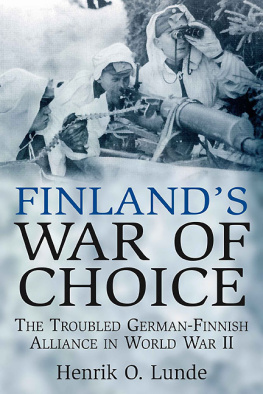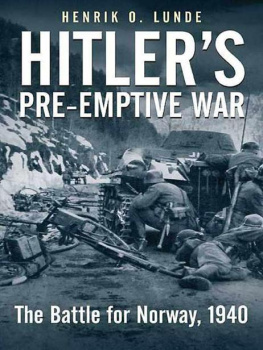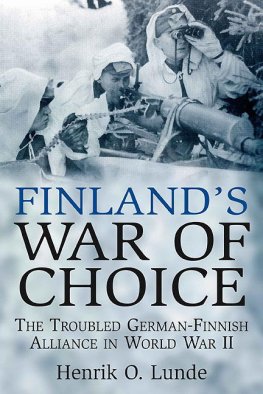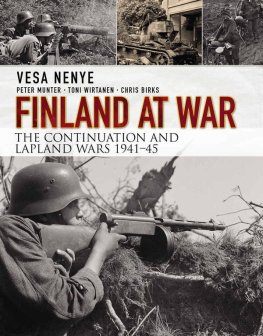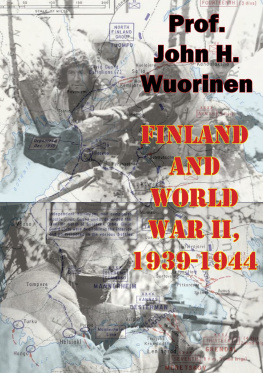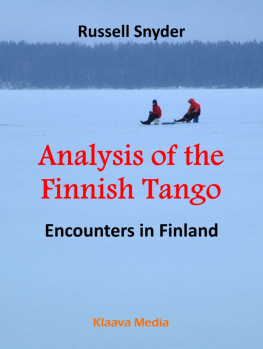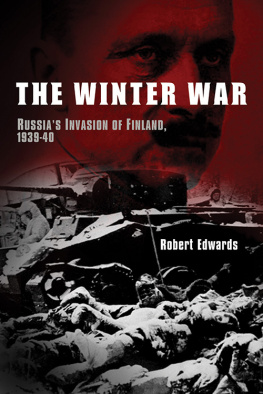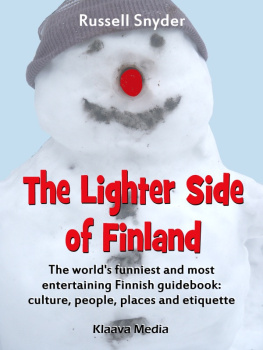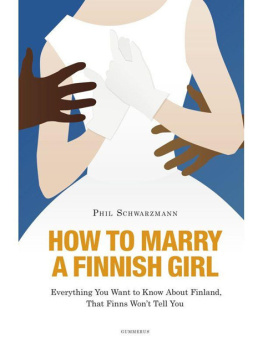

Published in the United States of America and Great Britain in 2011 by
CASEMATE PUBLISHERS
908 Darby Road, Havertown, PA 19083
and
17 Cheap Street, Newbury RG14 5DD
Copyright 2011 Henrik O. Lunde
ISBN 978-1-935149-48-4
Digital Edition: ISBN 978-1-61200-037-4
Cataloging-in-publication data is available from the Library of Congress and the British Library.
All rights reserved. No part of this book may be reproduced or transmitted in any form or by any means, electronic or mechanical including photocopying, recording or by any information storage and retrieval system, without permission from the Publisher in writing.
10 9 8 7 6 5 4 3 2 1
Printed and bound in the United States of America.
For a complete list of Casemate titles please contact:
CASEMATE PUBLISHERS (US)
Telephone (610) 853-9131, Fax (610) 853-9146
E-mail: casemate@casematepublishing.com
CASEMATE PUBLISHERS (UK)
Telephone (01635) 231091, Fax (01635) 41619
E-mail: casemate-uk@casematepublishing.co.uk
MAPS
PREFACE AND ACKNOWLEDGMENTS
I n the Winter War (November 1939March 1940), Finland was left alone to face Soviet aggression with only a modicum of assistance from Western countries. Many books and studies have been written about this conflict. The extensive coverage in English of this three-and-a-half month struggle should not be surprisingfor it represented the gallant fight of a democratic David against a totalitarian Goliath. The bravery and determination of the Finns against insurmountable odds captured the imagination of the whole world.
The same is not true for the much longer and bloodier war that Finland fought against the Soviet Union at the side of Germany from 1941 to 1944and their subsequent campaign to drive the Germans out of Finland in 194445. It might be true, as Olli Vehvilinen writes, that the war in North Europe was buried under the avalanche of more newsworthy events in the greater war, but this was not the only reason.
Professor John H. Wuorinen writes the following in the foreword to his book, based on an anonymous Finnish manuscript, which he edited and published in 1948:
A document which tries to give an objective account therefore cannot be published without unpleasant consequences for author and publisher alike. If this were not so, this book would no doubt have been published in Finland months ago, and the name of the Finnish author would occupy the customary place on the title page.
While it is difficult to pinpoint how long after the war the condition described by Wuorinen persisted, it is worth noting that that the official history of Finlands involvement in World War II was not finished until 1994, more than thirty years after a similar multi-volume history about the war in Norway was completed.
The war at the side of Germany was not viewed in the same manner in the West as was the Winter Warit was not seen as a courageous and gallant fight to preserve democracy and freedom against a giant totalitarian neighbor. While numerous works on the war have been published in Finland, it is to be deplored that virtually none have been translated into English. The war at the side of Hitler was not one that brought pride to the nation and was a period many Finns would rather forget. Due to the lack of impartial and balanced treatment, large segments of the public in the US and Europe continue to believe that Finland found itself at the side of Germany in 1941 because it was attacked by the Soviet Union.
The Finns also refer to the war at the side of Germany as the Continuation War, an attempt to depict it as a continuance of the Winter War in order, perhaps, to obtain a more favorable reception both domestically and internationally. Both this attempt and the insistence that it was an independent war waged against the Soviet Union fail to stand up to close scrutiny. It has proven hard to overcome the fact that Finland was the only democratic country at Hitlers side.
The Finns own views about the war at the side of Germany have changed over the years. In the earlier period there was a tendency to emphasize the error of their decision to align themselves with Germany. Later, they appear to have come to the conclusion that the war was a struggle for survival and that the government made what it thought to be the least harmful choice among bad alternatives. While validating the fact that Finland found itself in an isolated and dangerous position after the Winter War and the German conquests in the West, this book will also demonstrate to the reader that there were other alternatives, which were not seriously pursued.
A defensive alliance between Finland, Norway, and Sweden after the Winter War as proposed by Finland and supported by the other two was not specifically prohibited by the Peace of Moscow or its protocols and should have been pressed harder by all countries. It was a serious policy mistake by the Soviet Union to oppose the formation of such a defensive alliance. It may well have spared the whole of Scandinavia from involvement in World War II. Similarly, the military political union proposed by Sweden and accepted by Finland later in 1940 would have benefited the Soviet Union as it specifically ruled out a Finnish war of revenge.
While examining these issues, the main purpose of the book is to deal with the unique problems that arose from an ill-prepared coalition between a democracy and a dictatorship. This book addresses the problems caused by differing war aims and the failure to make plans much past the initial assaults. Following Germanys victories in France and the Low Countries in 1940, it became axiomatic in both Finland and Germany that bringing about the military collapse of the Soviet Union would be easy and take a short time. Likewise, both appear to have harbored the view that Great Britain and the Dominions were defeated. These views are understandable in view of the spectacular victories Germany had racked up in less than two years. An underestimation of British determinationbacked by the vast arsenal of the United Statesas well as the resilience of the Soviet Union, undoubtedly contributed to a number of unwise decisions by both Germans and Finns.
The harsh and unforgiving climate and terrain in northern Scandinavia and the problems these posed for men and machines in military operations are considered throughout the book. The roads and railroads in this area were marginal and that, together with the great distances involved, posed severe problems for the logistical support of operations.
It became necessary to deviate from a strict chronological approach in this book. Some subjects recur in different time periods and must therefore be discussed in more than one chapter. For the convenience of the reader, complete dates are often provided to avoid confusion.
The Finns were sensitive to what happened on other fronts in World War II, particularly in the area south of Leningrad. Events in these areas influenced Finnish views on the war and consequently impacted on their political/military decision-making. I have therefore woven summaries of events on other fronts into the various chapters thereby hoping to make it easier for readers to understand events in Finland and the relations between Finland and Germany in context.
The best and most comprehensive accounts in English of the German-Finnish coalition war are those written by Earl F. Ziemke and General der Infanterie Waldemar Erfurth, the Chief of the German liaison staff at the Finnish headquarters. Ziemkes work, The German Northern Theater of Operations was written in 1959 for the US Department of the Army while Erfurths book (based on a book he had published in German in 1950) was written under the auspices of the Foreign Military Studies Branch of the Historical Division, European Command, more than twenty years later. Another work of historical research that deserves mention is Major James F. Gebhardts book, written for the Combat Studies Institute of the US Army in 1989. This excellent study deals in detail with the Soviet breakthrough and pursuit in the Arctic region in late 1944.

